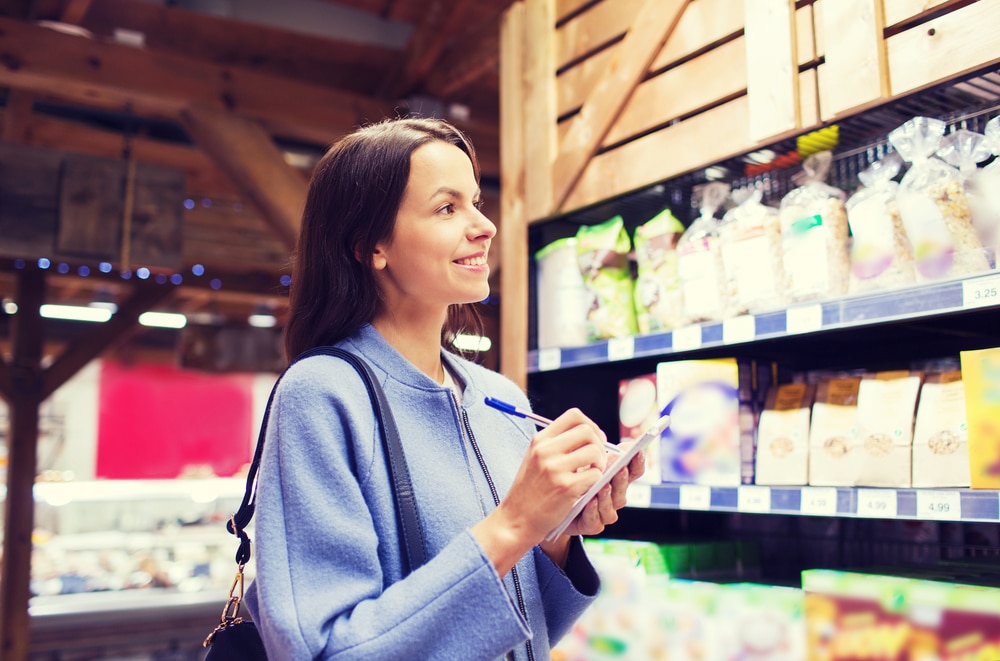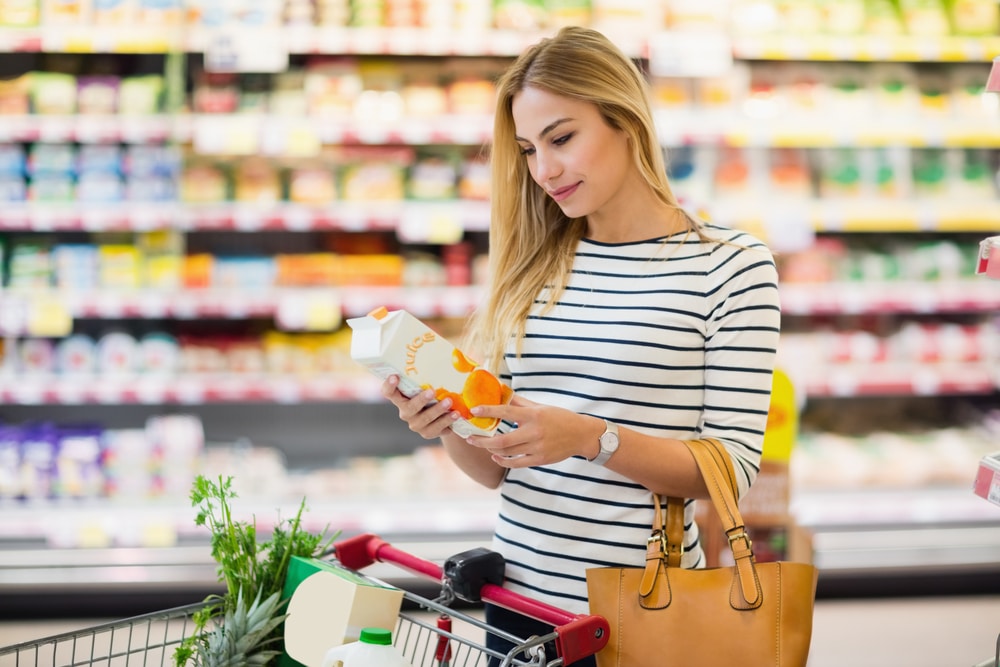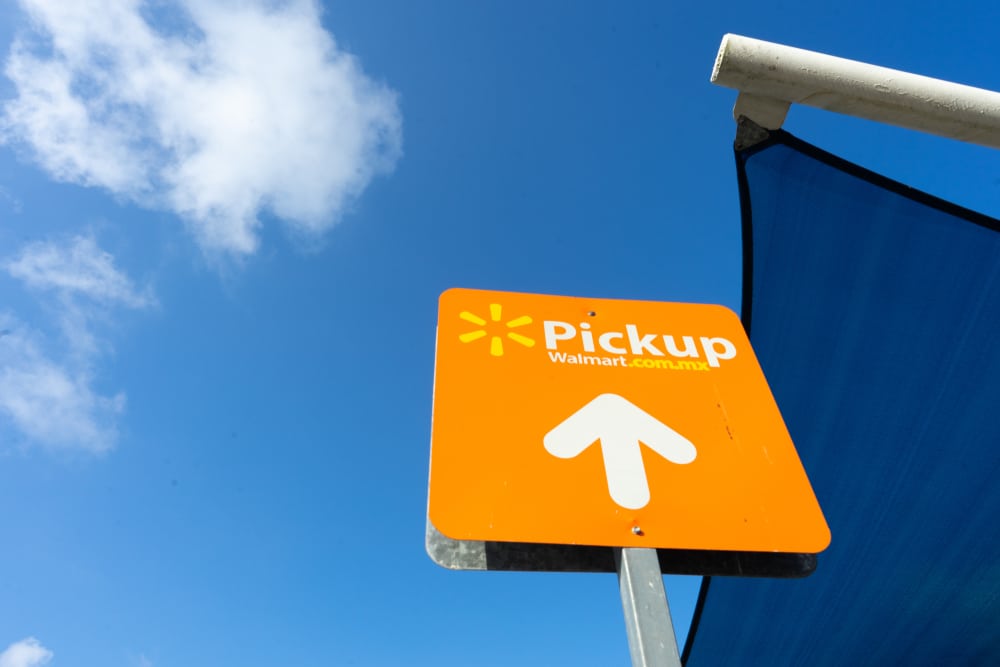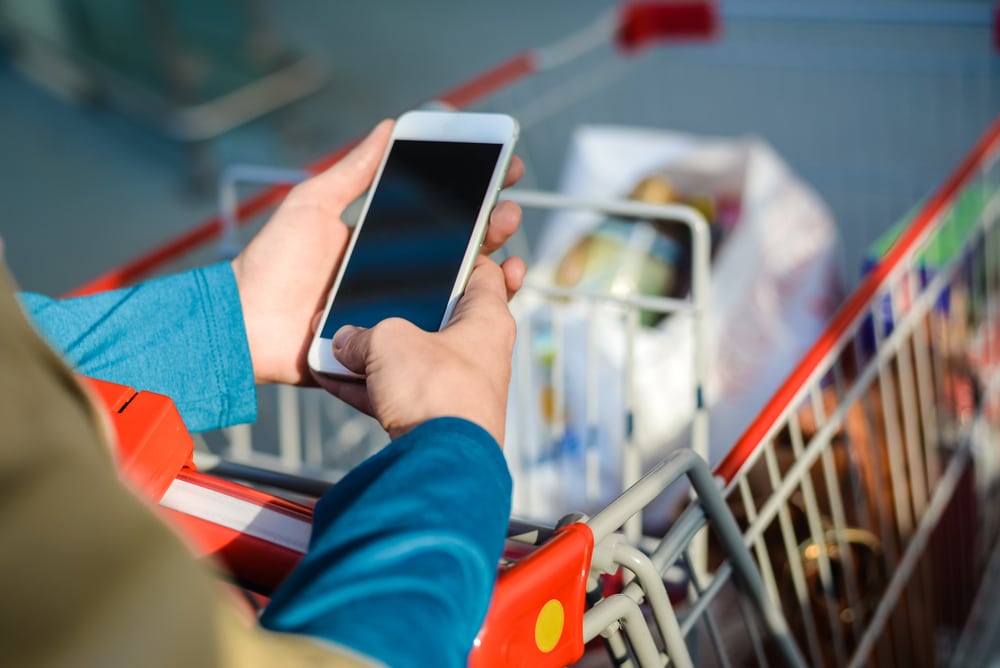The customer’s in-store experience will continue to remain relevant as long as physical shops exist. Continue reading “How to improve the in-store experience with mobile technology”
Category: Marketing
6 tips for building an effective online retail marketing strategy

6 tips for building an effective online retail marketing strategy
One of the biggest challenges to guiding consumers through the online sales funnel is cart abandonment. The current cart abandonment rate hovers at about 75% for online retail sales. There are common barriers during online shopping that keep consumers from moving to sales completion. When planning an online retail marketing strategy, it’s critical to understand, address and resolve those checkout barriers.
Common Causes for Cart Abandonment
The last crucial step within the online shopping journey, checkout, is where most sales are lost. For some reason, before the consumer submits the official order, they often choose to navigate away from the web page. Typically, their failure to make the purchase will fall into one of six categories:
Low buying intent:
This is arguably one of the most common causes of cart abandonment, in that the consumer never intended to make a purchase or wasn’t extremely motivated to buy. They may have added items to their cart out of passing interest or accident, but they had little intention of following through.
Lack of retailer trust:
Trust is an important component in online sales, both in customers sharing credit card data, and having confidence in the efficacy of the product. Without it, consumers are unwilling to purchase products.
Comparison shopping:
Consumers may have multiple windows open as they shop and often seek out the lowest cost option. In this case, they abandon one cart because they found a better deal elsewhere.
Excessive shipping time:
Shipping can be a deal-breaker for customers, especially with powerhouses like Amazon and Walmart offering same-day options. Fifty-six percent of shoppers ages 18 to 34 expect same-day delivery, meaning demand for rapid shipping is only going to grow.
Distractions:
Outside distractions that require an individual’s attention, like a knock at the door or phone call, can keep consumers from finishing their sale. Once they’re off the website, they’ll be less likely to return to make the purchase.
Sticker shock from add-ons:
Taxes, shipping fees, and other add-on costs can significantly increase the price that the consumer initially thought was fair. This is another one of the most common causes of cart abandonment and can damage trust as well.
1: Leverage Limited Time Offers to Encourage Purchase
Consumers who window shop make up the low buying intent crowd. They’re not particularly focused on purchasing anything, so they can be a hard sell. A retailer who understands shopper buying behavior will use this as an opportunity to improve the buying intent of these consumers by leveraging scarcity.
2: Engage in Online Reputation Management to Establish Trust
Lack of consumer trust is more of a problem for emerging retailers than it is for established ones as consumers can easily see evidence that an established retailer is trusted. They look to several avenues both on and off a retailers site to determine the level of trust. Some may include:
SSL Certificates:
An SSL certificate ensures consumers that their payments are secure on a given website. The indicator is provided by the “https” in front of the web address, with the “s” denoting a current SSL certificate. Even consumers who don’t know to look for this “s” will likely receive a warning from their security software if they are on a site without a current SSL Certificate. In some cases, they’ll be blocked from visiting it entirely.
Onsite reviews:
Consumers will check the reviews on a retailer’s site regarding a specific product. However, they’re more likely to look off-site to see the overall reputation of the retailer as they’d expect a more unbiased perspective.
Organic search:
If the consumer wants information on the reputation of a retailer, the first thing they’ll likely do is plug the name into a search engine and see what comes up. If there are sites that mention negative experiences, problems with products or lack of security, they’ll be unlikely to continue on to purchase.
Social media:
Social media creates transparency for individuals who want to see how retailers respond to consumer criticism, complaints, and questions. This can be a great place for retailers to establish trust by addressing customer issues quickly and openly.
3: Use Rewards to Provide Greater Value to Customers
Nearly one-quarter of online shoppers compare the prices on a brand or retailer’s site to other purchase platforms to see if they can get a better deal. Removing this barrier to purchase is difficult, as the primary factor is often not flexible. Retailers don’t usually want to sacrifice profit so they must find an alternative to keep consumers on their site and reduce their urge to comparison shop.
4: Partner With Third Parties for Faster Shipping
Rapid shipping is no longer a bonus to consumers—it’s a requirement. The longer a consumer must wait for an item, the more likely they will be to abandon their cart. Rapid shipping also improves retention as 75% of consumers report that they are more likely to purchase from a company again after receiving same-day delivery on their first product.
5: Make Remarketing Part of Your Online Retail Marketing Strategy
Consumers often abandon their carts if they don’t have the time needed to complete their purchase. Retailers can improve follow-through by taking the complication out of their checkout—for example, by allowing consumers to check out without creating an account and saving payment information for later. However, when that doesn’t work, brands can also look to remarketing and follow-up emails to remind consumers of the product they left behind.
Retailers who make use of follow-up emails should typically plan out three messages that incorporate various conversion marketing elements to encourage consumers to buy. This typically works as follows:
First email:
The first email is a simple reminder with a link that the consumer can follow to return to their cart. This one should go out on the same day—or ideally within one hour—of them leaving their cart. This works to get consumers who’ve simply forgotten to check out to return.
Second email:
The next email should go out 24 hours after the first—or if there is an event like a sale—at the same time the event begins. This can help to encourage consumers who may not have had high buying intent but are still interested in the product.
Third email:
The third and final email should go out one week after the consumer abandons their cart. This email can include a coupon code, promise of free shipping, or other rewards to drive scarcity and incentivize a return visit.
Remarketing software will store session cookies, allowing brands to display ads of the abandoned product on Google, Facebook, and other websites the consumer visits. This will remind the viewer of the product and provide an easy way to return to the site when they’re ready to purchase.
6: Maintain Transparency to Reduce Sticker Shock
When a consumer sees one price on the website, and then a much higher one when they try to check out, they’re likely to abandon their cart and feel misled by the retailer. This is bad for sales and for relationship management. To avoid this, retailers must strive to be as transparent as possible during checkout.
How to develop the best customer acquisition strategy for your brand

Studies have found that the cost of new customer acquisition has the potential to be five times greater than customer retention. Continue reading “How to develop the best customer acquisition strategy for your brand”
Black Friday marketing ideas: How to retain customers after the sales end

While many may lament the idea of ultimate shopping deal days like Prime Day, Cyber Monday, or Black Friday, shoppers still mobilize and purchase in droves during these special events. Continue reading “Black Friday marketing ideas: How to retain customers after the sales end”
‘Tis the season: 10 ways to boost holiday sales in 2019

According to Kiplinger’s most recent economic forecast, 2019 holiday sales are on track to outpace last year’s numbers. Continue reading “‘Tis the season: 10 ways to boost holiday sales in 2019”
4 effective retail marketing trends that will drive success

4 effective retail marketing trends that will drive success
About 66% of online shoppers rely on more than one channel for purchases. Brands must be prepared to cater to multichannel shoppers by having representation on platforms consumers will use to guide their purchase decisions. Rather than focusing on a single segment, the future of retail will involve the components of a digital and traditional marketing campaign and how they’re combined to drive a single purchase.
#1: Social Commerce Has a Strong Impact on Retail Marketing Trends
Social commerce is a popular emerging option for sales as consumers view it as a more genuine experience than other shopping sites. By purchasing items via Facebook, Instagram, Snapchat and other social platforms, they can see how other consumers view the product, check out reviews and reach customer service as needed. Due to these genuine interactions, this is a very effective method of advertising. On Instagram alone, 75% of users report that at least one of their purchases was influenced by content they saw on the site. Here are a few platforms brands should consider, as well as their pros and cons.
| Platform | Pros | Cons |
| Facebook: Facebook is the most obvious option for brands gaining a foothold in social commerce. The site provides online stores, having rolled out the service in 2015, and has an extensive ad targeting campaign to support sales both on the site and off. |
|
|
| Snapchat: Snapchat has slowly been expanding its options by both allowing consumers to use image search to make Amazon purchases and, in some cases, buy directly. |
|
|
| Instagram: Instagram began offering brands the ability to create shoppable posts in 2018 and recently added on-platform checkout options for select markets and brands. |
|
|
While this is by no means an exhaustive list, these three social media sites are among the most popular for social commerce. Brands should consider how purchases on social media apps and platforms will change distribution models in the years to come, as such behaviors are likely to make direct sales more prevalent.
#2: Voice Search Creates Visibility Challenges for Brands
Voice shopping is expected to exceed $40 billion in value by 2022. This is a valuable marketing area to target, but brands will be challenged by segmentation. Currently, consumers typically voice search in two ways: via mobile device or through smart speakers. However, each mobile platform and smart speaker model has different options for voice-enabled shopping apps. Rising to the top of all of them will be near impossible, so brands must target a few high performing platforms, like Amazon’s Alexa and the Google Assistant, to ensure they reach the largest number of consumers. Brands will need to reconsider their organic marketing strategies in these areas to gain the most visibility. Essentially, they should:
Focus on distinctive titles:
Distinctive titles will help brands reach the top of the listing when consumers’ searches get specific, as they are likely to do when seeking out grocery products. For example, instead of “toothpaste,” a brand would want to narrow the focus and list it as “whitening toothpaste” or something equally descriptive.
Target programs like Amazon Choice:
Most platforms will likely create programs similar to Amazon’s Choice platform, which prioritizes voice search items based on overall reviews, delivery times, ratings, and product popularity. Working to gain inclusion on such lists will exponentially increase brand visibility.
Grow brand awareness now:
It’s expected that consumers who use voice shopping to buy CPG products will already have a specific item in mind. Establishing proper brand recognition is crucial to reaching these consumers. Strategies to create spontaneous brand recognition should start now—before smart speaker ownership reaches full saturation.
#3: Mobile Takes a Larger Role in Online and In-Store Commerce
Consumers research heavily before indulging in offline purchasing in almost all categories. In 2018, mobile-influenced offline spending was more than $1 trillion. Modern smartphones play a much more prevalent role in the purchase of products both online and in the shopping aisle than ever before. In fact, nearly half of consumers with smartphones report using them to research products in the store.
#4: More Consumers Demand AR/VR to Aid in Purchase Decisions
Almost 50% of consumers report they are more likely to shop with retailers who offer virtual or augmented reality experiences. AR is likely the most attainable option for brands, as it works with most smartphones without the need for specialized equipment. However, as VR technology becomes more affordable, it’s likely this area will open up for marketers and retailers as well. There are many different ways that brands use AR and VR to streamline their work and improve the customer experience. Some examples of such use include:
In-store assistance:
Shopping in the store for someone with limited mobility is often a challenge, as they have difficulty seeing products outside of their direct eye line. Programs that allow these consumers to scan the store through their phone’s camera and see things like the price, product description, and other pertinent details are invaluable for making shopping accessible for everyone.
Recreating the in-store experience:
Virtual reality has the potential to bring the in-store experience to the comfort of the consumer’s home, allowing them to browse items and shop without leaving the house. Already, major retailers like Walmart are exploring the potential of VR shopping experiences for consumers. These types of programs would be ideal for supporting popular shopping options like in-store pickup and grocery delivery.
Employee training:
One of the original purposes of AR was for employee training, and that remains a primary use today. With it, retailers and brands can teach employees how to do their jobs with enhanced 3D tools which help them learn faster while minimizing the risk of errors and injuries.
Try on or try out options:
Some brands face barriers in online shopping as consumers need to see products in person before they buy. This is especially true for items like cosmetics and furniture, which can be difficult to return. Allowing consumers to use an AR overlay to see how a certain eyeshadow will look on them, or how a couch will fit in their living room, provides brands with an opportunity to minimize a common barrier to purchase.
Location-based features:
While location-based marketing isn’t a type of AR use, it can significantly enhance the AR experience. Brands can understand this simply by looking at the popularity of AR games that tie the consumer’s location to their experience. These apps engage the user by only unlocking certain features when a consumer enters a specific area, which makes them great for guiding consumers to products in the store.
3 in-app advertising trends that are shaping digital retail marketing

Consumers spend an estimated three hours per day on their mobile devices, which makes following in-app advertising trends crucial to marketers who want to reach them. Continue reading “3 in-app advertising trends that are shaping digital retail marketing”
How implementing a digital customer experience strategy could boost online sales

Having a robust digital customer experience strategy is crucial to keeping up with consumer expectations. Continue reading “How implementing a digital customer experience strategy could boost online sales”
Retailers ask: Why is customer engagement so important?

If you’re wondering why customer engagement is so important, consider the fact that 73% of customers expect companies to understand their needs and expectations. Continue reading “Retailers ask: Why is customer engagement so important?”
4 factors influencing consumer decision making
4 factors influencing consumer decision making
Mobile shopping apps, rewards programs, and digital marketing tactics can all be used to close the gap in these spaces. They can guide consumers to products, make them more appealing for purchase and help them stand out among competitors in the shopping aisle. By leveraging these tools to direct consumers, brands can close sales and increase their market share.
How Digital Marketing Impacts the Factors Influencing Consumer Decision Making
Factors within traditional marketing that influence consumer decision making have not changed very much, but the way brands leverage them has—thanks to advancements in digital technology. In the past, brands would rely on celebrity endorsements, new and improved product formulas, premium shelf space, and steep discounts to drive sales. However, these all have drawbacks as they often fail to offer a reasonable ROI based on their overall expense.
Digital spaces help brands enhance all parts of their marketing mix through more cost-effective strategies. Traditional discounts are offset by rewards. Everyday shopper recommendations on social media provide word-of-mouth marketing that outperforms celebrity endorsements. Mobile apps can direct consumers to products in the aisle and brands can differentiate their products not by changing them, but by marketing them in a new way. Here are four ways that brands can use technology to leverage the factors influencing consumer decision making.
#1: Reduce Reliance on Discount-Based Pricing With Rewards
While price will likely always be a vital factor that drives purchase decisions, it’s not the only component consumers take into consideration. Quality, sustainability, and convenience are also crucial motivators that encourage consumers to buy. Aside from that, steep discounts actually have some opposite effects when it comes to improving sales. Some to consider include:
Economic unsustainability:
Competing with white-label or private-label brands is often a challenge for most large, household name CPG companies looking for long-term, sustainable results. Brand-name companies typically have higher overhead costs, meaning it’s not as easy to offer cut-rates on products and maintain profitability.
Reduced perceived quality:
There is a direct correlation between price and quality perception. Typically, the lower the price, the lower consumers view the quality of a product. Often, quality is a deciding factor for consumers choosing CPG brands, so using steep discounts could actually deter them from buying.
Ephemeral loyalty:
Discounts may be good for gaining one-time users, but they’re not typically strong for creating ongoing customer relationships. Discount-driven consumers will usually switch to a cheaper product as soon as the price goes back to normal.
#2: Direct Consumers to the Right Place With Mobile Apps
Approximately 96% of consumers who visit a mass merchandiser or grocery store make at least one CPG purchase. This makes shelf space and visibility absolutely imperative in gaining sales. However, premium shelf space is finite and can be expensive when dealing with retailers who use “slotting fee” systems where brands must pay for their space in the store. An alternative to paying those high fees or fighting for space is to use mobile shopping apps to direct consumers to products.
Gamifies the consumer experience:
Gamification, or turning an everyday exercise into a game, engages consumers during their shopping journey and encourages them to participate. In Shopkick’s case, the app works like a digital scavenger hunt. This makes the experience fun and keeps user retention high.
Rewards them for participating:
Rewards need to tread a thin line between offering affordability for the brand while providing enough of an incentive that the consumer believes the app is worth it. If consumers feel it is too hard to obtain these rewards, they’ll likely stop using the app.
Engages them with pre-trip ads:
While most purchase decisions are made in the shopping aisle, brands must still prime consumers for sale before they reach the store to gain the best results. Using an app that allows them to view digital content like mobile video can ensure the brand is top-of-mind both before and during the consumer’s shopping trip.
#3: Carefully Cultivate Influencers to Promote Products
In the age of social media, brands are now turning to influencers to help endorse their products. These individuals have massive online followings, which many brands leverage to drive sales of their products. The assumption is that the right product recommendation from an influencer can garner hundreds of thousands of sales. In some cases, if the relationship is carefully cultivated, this is true. In others, the ROI fails to meet expectations as there wasn’t enough leg work done in selecting the influencer.
Follower count vs. comments:
Often, if an influencer is buying followers, their comment count won’t correlate to their overall follower count. If they have a million likes but only one or two comments, it’s a likely sign that their numbers are inflated. Even if the numbers are genuine, the lack of comments indicates a lack of engagement that will result in poor sales.
Available content:
Brands should do a thorough review of the influencer’s content not just to see if they’ll represent the brand well, but if there will be conflicts. For example, if the influencer has been touting the benefits of Brand A since they started their channel on YouTube, viewers will likely be suspicious when they suddenly switch camps and start endorsing Brand B. It’s best to find influencers that are already actually using branded products, or ones without existing preferences.
Growth potential:
There’s a certain lifecycle to consider in gaining the right influencers as their popularity window is shorter than that of a mainstream celebrity like a movie star or professional athlete. Ideally, brands want to connect with someone before their fame reaches their peak to get the best endorsement deal and benefit as the individual’s clout in the market grows.
#4: Differentiate Products With Digital Value-Adds
CPG brands are challenged by the ability to differentiate their product in a crowded marketplace. About 30,000 new consumer products are launched every year and the vast majority fail to gain a following. Standing out in this marketplace isn’t a matter of creating an entirely new product. Instead, it’s about finding methods to offer old products in new ways. This is a strategy that many challenger brands have leveraged with great success.
Why your CPG brand’s shelf placement strategy should incorporate mobile

While the placement of products on the shelves at a supermarket may seem completely random to a consumer, companies understand that behind the scenes, a shelf placement strategy is at the heart of product and brand success. Continue reading “Why your CPG brand’s shelf placement strategy should incorporate mobile”
A buy online pickup in store strategy won’t necessarily stop in-store purchases

According to Business Insider, over 68% of U.S. customers have made multiple “buy online pickup in store” purchases in the past year. Continue reading “A buy online pickup in store strategy won’t necessarily stop in-store purchases”

